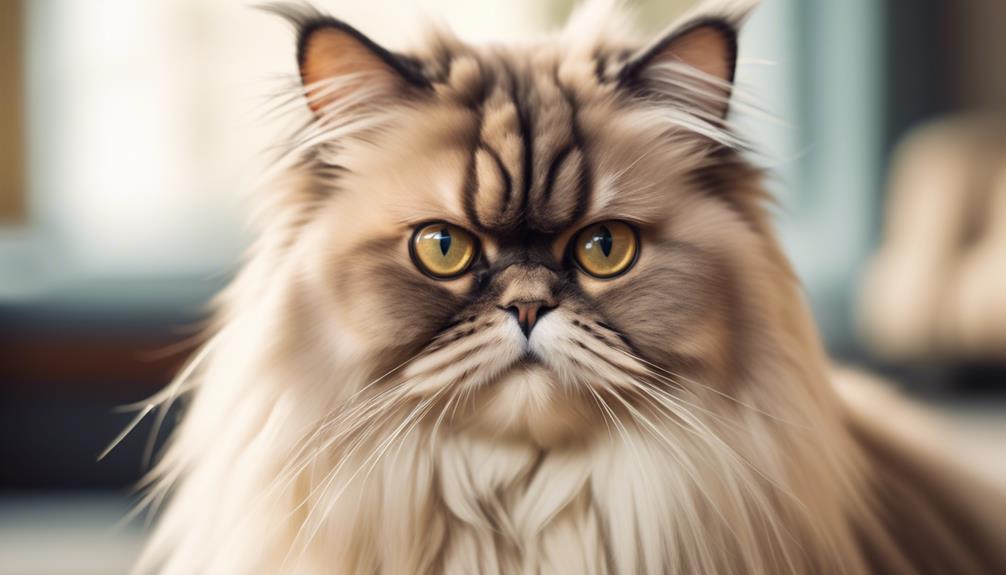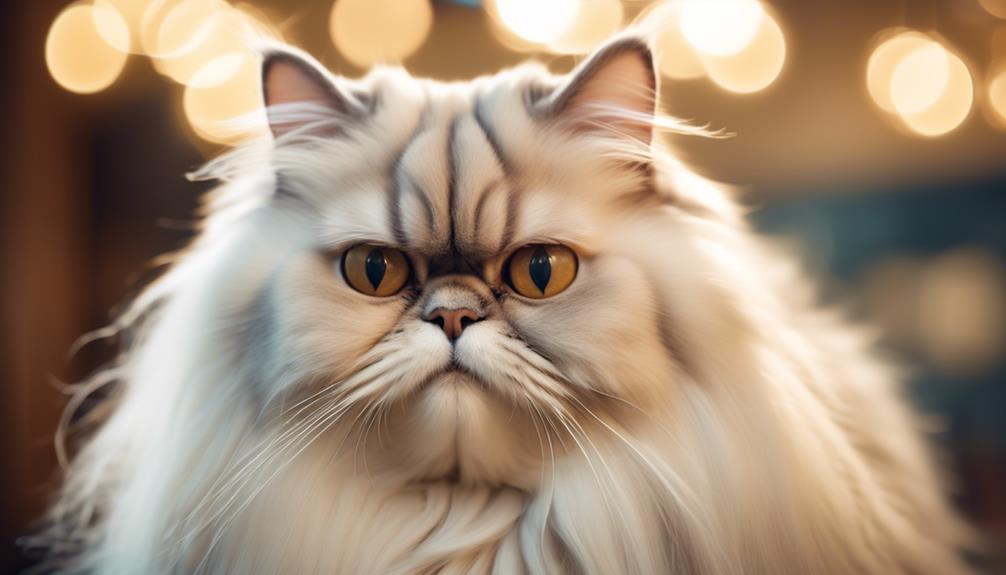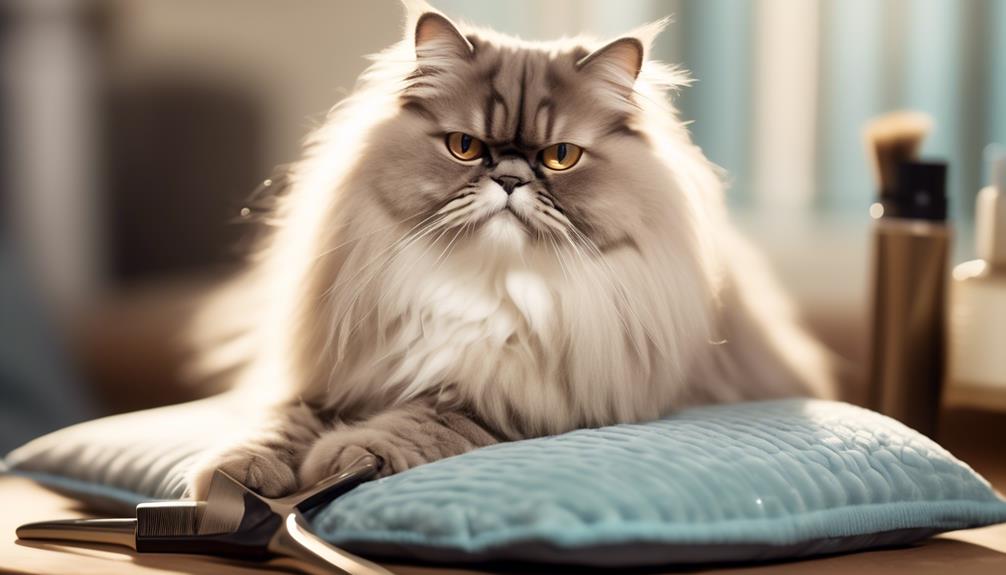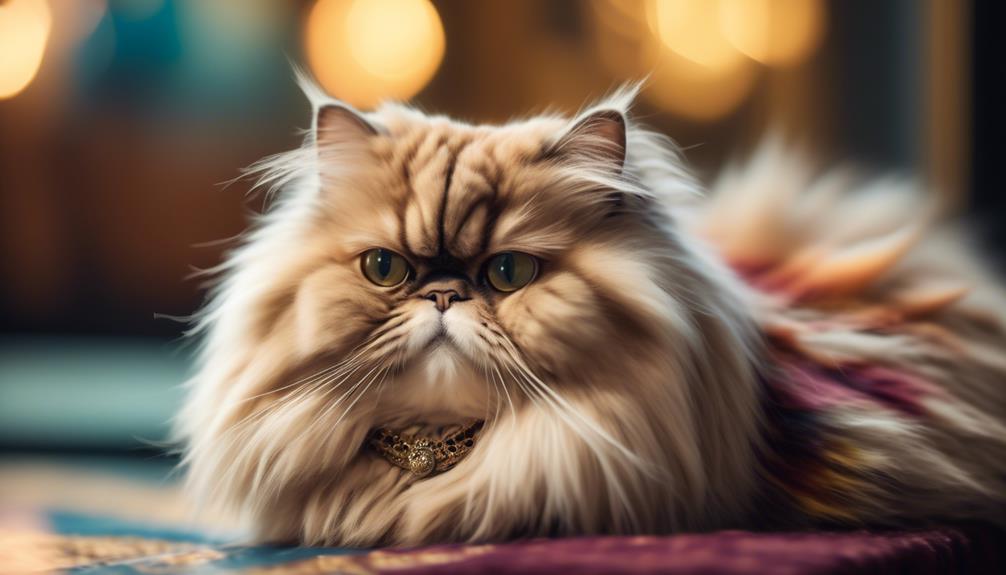
Welcome to the fascinating world of Persian cats, where elegance and charm meet in a feline form.
With their mesmerizing long fur and regal appearance, Persians have enchanted cat lovers for centuries.
But there is more to these majestic creatures than meets the eye.
In this discussion, we will uncover the secrets behind the origins and history of the Persian breed, revealing the captivating journey that brought them to our homes today.
From their enchanting temperament to their unique care requirements, we will explore the characteristics that make Persian cats such beloved companions.
So, join us as we embark on a journey that will unveil the mysteries of the Persian cat breed, leaving you eager to discover all that lies ahead.
Key Takeaways
- Persian cats have a long, dense, silky coat with various colors and patterns.
- They are known for their sweet, gentle, and affectionate temperament.
- Persian cats require high-maintenance grooming and daily care, including bathing and dental care.
- They are prone to certain health conditions, such as polycystic kidney disease and respiratory problems.
Persian Cat Origin and History
The origin and history of the Persian cat can be traced back to Mesopotamia, where its long hair was a natural mutation that eventually led to its distinctive appearance.
This luxurious coat was highly valued by the ancient Persians, who selectively bred the cats to enhance this trait.
In the 17th century, Pietro Della Valle brought some Persians to Europe, where they quickly gained popularity among the upper class.
Queen Victoria’s love for Persian cats further popularized the breed in the late 19th century.
Over time, selective breeding has resulted in various coat colors and patterns.
Today, Persians are known for their sweet and gentle temperament, as well as their high-maintenance grooming needs.
Despite their long history, Persians remain a beloved and sought-after breed.
See another cat breed profile.
Peterbald Mixed Cat Breed
Adoption and Breeding Considerations

When considering adopting or breeding a Persian cat, it is essential to prioritize ethical practices and the cat’s well-being.
Here are some key considerations to keep in mind:
- Prioritize adopting from rescue organizations or shelters. There are many Persian cats in need of loving homes.
- If purchasing from a breeder, choose a reputable one. Research the breeder’s ethical practices and ensure they prioritize the health and temperament of their cats.
- Discourage unethical breeding practices such as excessive breeding or breeding for extreme physical traits.
Persian Cat Characteristics and Temperament

With their sweet and gentle temperament, Persian cats are known for being affectionate companions.
These cats are renowned for their calm and loving nature, perfect for people seeking a gentle and serene pet.
Persians enjoy spending quality time with their owners, often seeking their attention and affection.
They are not overly demanding and are content with a relaxed and quiet lifestyle.
Persian cats are generally low-energy and do not require a lot of exercise, making them suitable for individuals living in apartments or homes without access to outdoor space.
However, they still enjoy interactive playtime and engaging with their human companions.
Despite their laid-back nature, Persians are trainable and can learn various commands and tricks.
Their easy-going temperament and loving nature make them popular pets for families, the elderly, and individuals seeking a calm and devoted feline companion.
Care and Grooming for Persian Cats

Proper care and grooming are essential for maintaining the health and appearance of Persian cats.
Here are three key aspects to consider:
- Daily grooming: Persians have long, thick coats that require daily brushing to prevent matting and hairballs. Regular grooming also helps distribute natural oils and keeps their coats shiny and healthy.
- Bathing and dental care: Persians should be bathed regularly to keep their coat clean and free of dirt and oils. Additionally, dental care is essential to prevent dental diseases, such as gum infections and tooth decay.
- Clean litter box and eye care: Regularly cleaning the litter box is crucial for maintaining the hygiene and well-being of Persian cats. It is also important to wipe their eyes daily to prevent tear stains, as Persians are prone to excessive tearing due to their facial structure.
Persian Cat Coat Colors and Patterns

Persian cats are known for their diverse range of coat colors and patterns.
Their long, thick, and shiny coats come in various shades and combinations, making them truly stunning and unique.
From solid colors like white and black to intricate patterns like tabby and tortoiseshell, Persian cats offer many options for cat enthusiasts.
Each coat color and pattern adds to the charm and allure of these elegant felines.
Persian cats will captivate you with their beautiful coats, whether you prefer a striking solid color or a captivating combination.
Frequently Asked Questions
Are Persian Cats Good With Children and Other Pets?
Persian cats are known for their sweet and gentle temperament, making them generally good with children and other pets.
However, it is essential to gradually supervise and introduce interactions to ensure a positive and safe environment for everyone involved.
How Often Should Persian Cats Be Taken to the Veterinarian?
Persian cats should be taken to the veterinarian at least once a year for routine check-ups, vaccinations, and preventive care.
However, individual cats may require more frequent visits depending on their age, health status, and any specific medical conditions they may have.
Do Persian Cats Require a Specific Diet or Special Nutrition?
Persian cats do not require a specific diet or special nutrition, but it is essential to provide them with balanced and high-quality cat food that meets their nutritional needs.
Regular vet check-ups can help monitor their health and dietary requirements.
Can Persian Cats Be Trained to Use a Litter Box?
Yes, Persian cats can be trained to use a litter box.
It is essential to start litter box training early and provide a clean, accessible litter box. Positive reinforcement and consistency are critical to successful training.
Are Persian Cats Prone to Any Specific Allergies?
Yes, Persian cats are prone to certain health conditions, but allergies are not commonly associated with this breed.
However, they are more susceptible to respiratory problems and polycystic kidney disease.
Regular veterinary check-ups are recommended to monitor their health.
Conclusion
In conclusion, the Persian cat is a majestic breed with a rich history and unique characteristics.
Their long, dense fur and sweet temperament make excellent companions for those willing to provide the necessary care and grooming.
When considering adoption or breeding, it is essential to prioritize ethical practices and support rescue organizations or reputable breeders.
By understanding and meeting the needs of Persian cats, owners can ensure a happy and healthy life for these beautiful feline companions.




